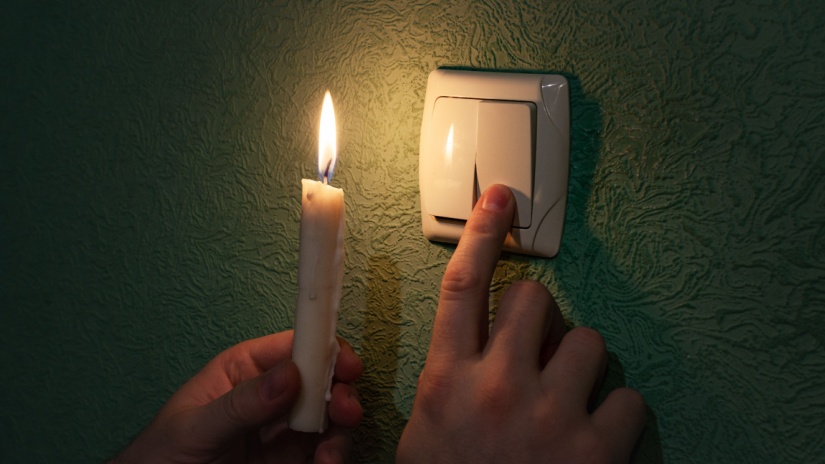Australia’s energy transition: Can we ditch coal without blackouts?

Australia’s coal-fired power stations are aging and increasingly unreliable. Many were built in the 1970s and 1980s, and over 60% of the fleet is now more than 40 years old. As these plants age, their performance is declining, with a growing number of unplanned outages and operational inefficiencies.
Coal remains a major part of Australia’s electricity generation mix, accounting for around 45% of total electricity output in recent years. However, with multiple plants scheduled for retirement over the next decade, the urgency to replace coal with clean, reliable alternatives is growing rapidly.
Most energy market forecasts predict the majority of coal-fired generation will exit the system by 2040 - some much sooner. This means the transition away from coal is not just coming; it’s already underway.
What scale of replacement is needed
Phasing out coal without blackouts requires more than just replacing the total megawatts of lost capacity. The energy system must maintain:
- Total capacity: The same or greater levels of electricity generation must be available.
- Firming and flexibility: Renewable sources like wind and solar are variable, so firming technologies (like batteries, gas, or pumped hydro) must provide backup.
- Transmission and integration: Power needs to be delivered where it’s needed, meaning upgrades to the grid and new transmission lines.
- Reliability margins: The system must be able to cope with peak demand, sudden outages, or extreme weather.
Australia is currently facing the retirement of over 11 gigawatts of coal-fired capacity by 2035. Replacing that capacity means bringing on even more new renewables and firming to cover variability and provide additional security.
What replacement plans are in place
Storage
Large-scale batteries are being rapidly rolled out across the country, with multiple high-capacity storage projects already operational or under construction. These batteries can dispatch power during peak periods and help stabilise the grid. Newer storage technologies are also emerging, aimed at extending duration and reliability.
The national battery pipeline is growing quickly, with thousands of megawatts scheduled to come online by 2027. This is a critical part of the coal replacement strategy.
Gas
Natural gas is seen as a bridging fuel. It provides flexible, dispatchable power that can be called upon quickly when renewables aren’t producing. While gas has its own environmental concerns, many experts see it playing a short- to medium-term role in supporting grid reliability during the transition.
However, gas faces challenges of its own, including rising costs, supply constraints, and policy uncertainty.
Transmission
A major expansion of Australia’s transmission network is underway. New transmission lines are needed to connect renewable energy zones - often located in remote areas - to population centres and industrial users.
States and the federal government are coordinating efforts to fast-track critical transmission projects, helping to unlock the full potential of renewable generation and reduce congestion across the grid.
Where the risks and gaps still lie
Despite ambitious targets and a solid pipeline of projects, key risks remain:
- Project delays. Storage, transmission, and renewable projects must be delivered on time to avoid supply gaps as coal exits the system.
- Shortfalls in firming. Batteries typically provide only a few hours of backup. For multi-day supply during periods of low renewable output, other technologies (like pumped hydro or gas) are essential.
- Transmission bottlenecks. Even with enough generation, inadequate transmission infrastructure could restrict power flow to where it’s needed most.
- Extreme weather. Climate-related events like heatwaves, bushfires, or storms can spike demand and knock out infrastructure. The grid must be resilient enough to handle these stresses.
- Market and policy uncertainty. Investors need stable policy settings to commit to long-term infrastructure. Shifting regulations or lack of incentives can stall progress.
Are current plans likely enough?
Current infrastructure and policy plans make it possible to phase out coal without blackouts, but success hinges on timely execution and system-wide coordination.
Under ideal conditions - on-time project delivery, coordinated grid upgrades, strong policy signals, and adequate firming capacity - Australia can navigate the transition safely.
However, the margin for error is slim. Even minor delays in key projects, regulatory setbacks, or extreme weather could push the system toward instability, especially during peak demand periods or unexpected plant outages.
What more needs to be done
To ensure a smooth, blackout-free transition away from coal, the following priorities must be addressed:
Accelerate approvals and construction
- Streamline planning and environmental approvals.
- Increase support for community engagement and landholder negotiations.
- Provide fast-track pathways for critical renewable and transmission projects.
Expand and diversify firming capacity
- Invest in a wider mix of storage technologies, including long-duration options like pumped hydro.
- Support the development of peaking gas capacity with lower emissions.
- Introduce flexible demand-side technologies, such as demand response programs.
Modernise the grid
- Build and upgrade key interconnectors and transmission corridors.
- Develop renewable energy zones with supporting infrastructure.
- Improve forecasting and visibility of supply and demand.
Strengthen market and regulatory settings
- Introduce incentives or market mechanisms to reward reliability and dispatchability.
- Ensure emissions reductions targets are aligned with investment signals.
- Maintain policy consistency across federal and state governments.
Plan for worst-case scenarios
- Increase strategic reserves and contingency planning.
- Ensure robust response frameworks for natural disasters and major outages.
- Build redundancy into the system to handle unexpected failures.
What next?
Australia is moving away from coal, and that shift is accelerating. While coal has powered the nation for decades, its era is coming to an end. The key question now is whether the replacement systems - renewables, storage, gas, and transmission - can be built fast enough and integrated well enough to keep the lights on.
The good news is that the pieces are falling into place. Battery storage is booming. Transmission projects are in the pipeline. Renewable energy is scaling up rapidly. Gas, while controversial, remains available as a flexible backup. But execution is everything. To avoid blackouts and deliver a clean, reliable energy future, Australia must act with urgency, coordination, and focus.
Whether you're looking to cut costs or reduce your carbon footprint, switching to a better energy plan has never been easier. Contact Compare Energy on 1300 790 106 today and speak to a specialist about options tailored to your home or business.
Let us help you power your future, better.

